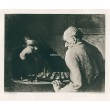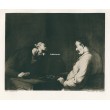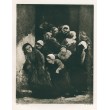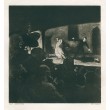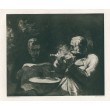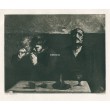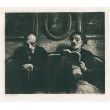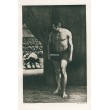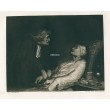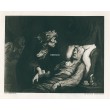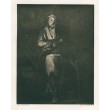Košík
0
x
Produkty
(prázdný)
Žádné díla
Bude determinováno
Dopravné a balné
0 Kč
Celkem
Produkt byl úspěšně přidán do nákupního košíku
Počet
Celkem
0 ks zboží.
1 dílo v košíku.
Za díla:
Doručení a balné:
Bude determinováno
Celkem
Kategorie
- grafiky/tisky
- obrazy
- kresby
- plakáty
- fotografie
- exlibris
- bibliofilie
- knihy/katalogy
- starožitnosti
- sochy/plastiky
- sklo
-
Hnutí
- abstrakce
- art-deco
- čs.avantgarda/moderna
- expresionismus
- fauvismus
- impresionismus
- kubismus
- naivní umění
- op-art
- poetismus
- pop-art
- realismus
- secese
- sociální kritika
- soudobá tvorba
- surrealismus
- světová avantgarda/moderna
- Škola prof. Albína Brunovského
- Škola prof. Zdeňka Sklenáře
- Škola prof.Julia Mařáka - mařákovci
- Žánr
- Zprávy/NEWS
- Doporučujeme
Nová díla
-

Zamilovaný klaun
484 Kč -

Světlo na profil v dlani (Prosby)
1 452 Kč -

Světlo na klečícího (Prosby)
1 452 Kč
-

Les Banderilles, opus 940 (1959)
871 Kč -60% 2 178 Kč
Hnutí
- abstrakce
- art-deco
- čs.avantgarda/moderna
- expresionismus
- fauvismus
- impresionismus
- kubismus
- naivní umění
- op-art
- poetismus
- pop-art
- realismus
- secese
- sociální kritika
- soudobá tvorba
- surrealismus
- světová avantgarda/moderna
- Škola prof. Albína Brunovského
- Škola prof. Zdeňka Sklenáře
- Škola prof.Julia Mařáka - mařákovci
Žánr
NEJŽÁDANĚJŠÍ UMĚLCI
- Anderle Jiří
- Augustovič Peter
- Benca Igor
- Beneš Karel
- Bím Tomáš
- Born Adolf
- Brun Robert
- Brunovský Albín
- Boštík Václav
- Bouda Cyril
- Bouda Jiří
- Braque Georges
- Brázda Jiří
- Buffet Bernard
- Cézanne Paul
- Čapek Josef
- Čápová Hana
- Dalí Salvador
- Demel Karel
- Dudek Josef
- Dufy Raoul
- Effel Jean
- Felix Karol
- Filla Emil
- Giacometti Alberto
- Grosz George
- Chagall Marc
- Istler Josef
- Janeček Ota
- Jiřincová Ludmila
- Kandinsky Wassily
- Kĺúčik Peter
- Komárek Vladimír
- Kulhánek Oldřich
- Kupka František
- Lada Josef
- Lhoták Kamil
- Matisse Henri
- Miró Joan
- Mucha Alfons
- Muzika František
- Picasso Pablo
- Pileček Jindřich
- Reynek Bohuslav
- Sukdolák Pavel
- Suchánek Vladimír
- Svolinský Karel
- Šíma Josef
- Špála Václav
- Švabinský Max
- Švengsbír Jiří
- Tichý František
- Toulouse-Lautrec Henri de
- Toyen
- Trnka Jiří
- Váchal Josef
- Vik Karel
- Warhol Andy
- Zábranský Vlastimil
- Zoubek Olbram
- Zrzavý Jan
Seznam děl umělce Daumier Honoré
(1808-1879) Honore Daumier was born in Marseilles. His family moved to Paris when he was still just a small boy and Honore was forced to work very early in life because his father found it difficult to support a large family. Young Daumier worked first a
(1808-1879) Honore Daumier was born in Marseilles. His family moved to Paris when he was still just a small boy and Honore was forced to work very early in life because his father found it difficult to support a large family. Young Daumier worked first as a bailiff's clerk and then as an assistant in a bookshop. But his greatest and most passionate desire was to draw. However, when he finally received some art training, he found it boring and took to visiting the Louve and walking about Paris studying faces. A friend taught him the technique of lithography and Daumier began contributing to the press at the age of sixteen. This was the start of a career that was to last all his life, for he turned out hundreds of satirical cartoons that were impartially critical of all kinds of people, professions, and occupations.
Daumier was not only a brilliant lithographer; he also created small, vital statuettes and, between 1848 and 1870, he painted about one hundred oils. The latter are romantic in subject, free and dynamic in brushwork, striking in the use of contrast, and pervaded with a feeling for humanity as powerful as that of Rembrandt, whom he admired tremendously. Daumier's oils were not, as has sometimes been said, unknown to the public at large. He contributed regularly to the Salons, but the very vitality of his work and the bold brushwork with which his paintings were executed did not please the public, who continued to prefer his cartoons. In: http://www.3d-dali.com/Artist-Biographies/Honore%20Daumier.html * * * * * Honoré Daumier was born in Marseilles into the family of a glazier, who was fond of poetry and even wrote his own verses. In 1814, the family moved to Paris. Daumier started to study art in 1822 under the renowned artist and archaeologist Alexandre Lenoir. The financial situation forced Daumier to earn his living as a delivery boy, while at his spare time he sketched at the Louvre. About 1828, he learned the technique of lithography and began to work for small publishing houses. After the revolution of 1830 in the atmosphere of freedom of speech in France the role of mass media grew and the art of political satire flourished. In 1830, Daumier started to work for Philipon’s Caricature and Le Charivari. Satire against the king Louis-Phillip “Gargantua” (1831) brought him wide popularity, especially when he was sentenced for 6-months in prison because of it.
A biting political cartoonist, Daumier contributed satirical drawings to various Paris weeklies for most of his career. Nearly all of Daumier’s cartoons were done with lithography. History of France and Europe, social and political relations, and statesmen, find a place in his works. According to his contemporaries he had an amazing memory and capability to capture the essence of the model, its plastics, mimics, gestures. His series of sculpture portraits of French deputies is amazing.
At the end of the 1840s, Daumier’s interests shifted to painting, though he continued to issue many lithographs. His paintings however differ from his graphic works not only by techniques and artistic media but also by different subjects. Though his lithographic works embrace many themes, it’s impossible to find among them something like The Burden or a series of The Laundress. There is no irony in his paintings, in them he is a romantic, fully sympathizing with his characters. other examples. A Wagon of the Third Class. The Third-Class Carriage. The Beggars. Wandering Saltimbanques.
In 1848, Daumier participated in a governmental competition on the topic of Republic; his work Republic is in D’Orsay now. Other paintings by Daumier have subjects more characteristic of Romanticism. The numerous canvases and drawings of the adventures of Don Quixote, from Cervantes’ XVI novel, show the fascination this theme had for him. Don Quixote and Sancho Pansa.
Daumier worked much, he left more than 4000 works of graphics, 300 paintings, 800 drawings, 1000 woodcuts and sculptures. But despite this titanic work he could not make ends meet all his life. He died in the house that had been presented to him by Corot. Corot secretly bought Daumier a house, and wrote to him, “My old comrade – I have a little house for which I had no use at Valmondois near the Isle-Adam. It struck me that I could offer it to you and, as I think it is a good idea, I have registered it in your name at the notary’s. It is not for you that I do this, it is merely to annoy your landlord”. It was a simple gesture, and it gave Daumier a few serene and tranquil years.
Daumier, “one of the few Romantic artists who did not shrink from reality”, remained in his day practically unknown as a painter.” During his lifetime he found no public for his work. Only a few friends encouraged him and, a year before his death, arranged his first solo exhibition. Thus his pictures had little impact during his lifetime.
Daumier’s paintings are closer to the art of the 20th century than to his own: they are sketch-like and very expressive. Only in 1901, at Daumier’s post-humous exhibition the world discovered this name for itself. In: http://www.abcgallery.com/D/daumier/daumierbio.html * * * * * 1808 (Marseille-FRA) - 1879 (Valmondois) Francouzský malíř, grafik a sochař. Jeho otec byl sklářským mistrem a romantickým básníkem. Daumier byl nejprve zaměstnán jako poslíček u soudu, pak se učil příručím v knihkupectví. Od 1822 navštěvoval kreslířský kurz A. Lenoira, kde se zrodil jeho nepřekonatelný odpor ke klasicismu. Zato si oblíbil Tiziana a P. P. Rubense, jehož vlámská ,,kirmes" (posvícení) kopíroval. Navštěvoval Académie Suisse, 1828 se naučil litografovat a pod vlivem Charleta, Traviése, Monniera a Grandvilla začal kreslit politické karikatury v republikánském duchu. 1831 se dostal za litografii Gargantua na půl roku do vězení. Od 1832 spolupracoval s časopisem La Caricature, v němž publikoval Masky, karikatury tehdejších politiků, a ostré politické satiry, mistrovská díla litografické techniky, jako např. Le ventre législatif a Masakr v ulici Transnonain. Když 1835 zákon proti svobodě tisku znemožnil politickou karikaturu a 1837 byla La Caricature zakázána, přešel Daumier k společenské karikatuře a otiskoval své litografie v Charivari. Terčem jeho satirických šlehů bylo francouzské měšťáctví; hrdinou jednoho cyklu byl dobrodruh Robert Macaire, který se zásluhou herce Frédérica Lemaitra stal populární postavou tehdejší doby. Litografie Daumierovi postupně s1oužila stále více jako prostředek k zajištění živobytí, kdežto hlavní zájem soustřeďoval k svému malířskému a sochařskému dílu. V drobných p1astických figurkách (Ratapoil) na něho působi1 Préault. Od poloviny čtyřicátých let se věnoval převážně malbě. 1848 se účastnil soutěže na alegorické znázornění republiky; v postavě ženy, tisknoucí k prsům své děti, vytvořil první mistrovskou kompozici svého plasticky pádného stylu a zároveň jedno z nejvýznamnějších děl malířství 19. století vůbec. V Salónech 1849 a 1851 vystavil obrazy Mlynář, jeho syn a osel a Zloděj a osel na témata Lafontainových bajek, aniž vzbudil nějaký ohlas. Při své žurnalistické a umělecké činnosti získal řadu přátel mezi spisovateli (Balzac, Michelet) i malíři (E. Delacroix, C. Corot, T. Rousseau, J. Dupré), trpěl však tím, že ho nepovažovali za malíře sobě rovného. Sblížil se zejména a malíři barbizonské školy J. F. Milletem, Corotem a T. Rousseauem. 1846 se oženil s dělnicí, jež s ním trpělivě snášela jeho těžký osud. Od 1868 bydlel ve Valmondois v departementu Seine-et-Oise v domě, který mu tajně koupil Corot, když domácí chtěl Daumiera vystěhovat na ulici. Po 1873 začal Daumierovi slábnout zrak. V letech nouze mu nezištně pomáhali jeho přátelé, kteří si vážili jeho ryzího charakteru. Od 1877 dostával od státu roční penzi. Teprve rok před Daumierovou smrtí vzrostl zájem o jeho malířské dílo: velká výstava, kterou 1878 uspořádal u Durand Ruela, byla velmi příznivě hodnocena. Zemřel na mozkovou mrtvici.
Daumier byl jedním z největších malířů 19. století; témata svých obrazů, jež vytvářel jako svá privatissima, si vybíral z literatury (Don Quichotte a Sancho Pansa), divadla (Crespin a Scapin), ze soudního prostředí, uměleckého i každodenního života obyčejných lidí (Pradleny, Vagón třetí třídy, Polévka). Protože scházejí přesná data, lze Daumierovo malířské dílo jen s velkými obtížemi chronologicky řadit; situaci ještě více zkomplikovali četní plagiátoři. Falza Daumierových obrazů daleko převyšují počet jeho originálů. Navíc jsou někdy autentická díla, jež Daumier zanechal nedokončena, pokažena pozdějším domalováním. Určitá témata (např. Pradleny) známe v několika variantách, přičemž některé obrazy vzbuzují vážné pochybnosti o své pravosti. Autentická Daumierova díla však svědčí, že jejich autor byl vlastně nejbaroknějším umělcem mezi realisty francouzského malířství 19. století. Jeho vypjatý plastický smysl, vyhledávání prudkých kontrastů světla a tmy, sklon k dramatickému stupňování děje i dynamický, radikálně dělený malířský rukopis upomínají až na Tintoretta; bývá-li v novější literatuře označován za Michelangela 19. století, není to jen nezávazné přirovnání. Na Dauimiera navázal ve svém ranném období P. Cézanne.
Vyňato z Encyklopedie světového malířstvi - Autorský kolektiv pod vedením PhDr. Sáva Šabouk DrSc.; nakl. Academia ČSAV 1975. In: http://www.artchiv.cz/show.php3?action=explore_bio&id=126&session=14nd12r09y02h07t2007
Zobrazit
Daumier was not only a brilliant lithographer; he also created small, vital statuettes and, between 1848 and 1870, he painted about one hundred oils. The latter are romantic in subject, free and dynamic in brushwork, striking in the use of contrast, and pervaded with a feeling for humanity as powerful as that of Rembrandt, whom he admired tremendously. Daumier's oils were not, as has sometimes been said, unknown to the public at large. He contributed regularly to the Salons, but the very vitality of his work and the bold brushwork with which his paintings were executed did not please the public, who continued to prefer his cartoons. In: http://www.3d-dali.com/Artist-Biographies/Honore%20Daumier.html * * * * * Honoré Daumier was born in Marseilles into the family of a glazier, who was fond of poetry and even wrote his own verses. In 1814, the family moved to Paris. Daumier started to study art in 1822 under the renowned artist and archaeologist Alexandre Lenoir. The financial situation forced Daumier to earn his living as a delivery boy, while at his spare time he sketched at the Louvre. About 1828, he learned the technique of lithography and began to work for small publishing houses. After the revolution of 1830 in the atmosphere of freedom of speech in France the role of mass media grew and the art of political satire flourished. In 1830, Daumier started to work for Philipon’s Caricature and Le Charivari. Satire against the king Louis-Phillip “Gargantua” (1831) brought him wide popularity, especially when he was sentenced for 6-months in prison because of it.
A biting political cartoonist, Daumier contributed satirical drawings to various Paris weeklies for most of his career. Nearly all of Daumier’s cartoons were done with lithography. History of France and Europe, social and political relations, and statesmen, find a place in his works. According to his contemporaries he had an amazing memory and capability to capture the essence of the model, its plastics, mimics, gestures. His series of sculpture portraits of French deputies is amazing.
At the end of the 1840s, Daumier’s interests shifted to painting, though he continued to issue many lithographs. His paintings however differ from his graphic works not only by techniques and artistic media but also by different subjects. Though his lithographic works embrace many themes, it’s impossible to find among them something like The Burden or a series of The Laundress. There is no irony in his paintings, in them he is a romantic, fully sympathizing with his characters. other examples. A Wagon of the Third Class. The Third-Class Carriage. The Beggars. Wandering Saltimbanques.
In 1848, Daumier participated in a governmental competition on the topic of Republic; his work Republic is in D’Orsay now. Other paintings by Daumier have subjects more characteristic of Romanticism. The numerous canvases and drawings of the adventures of Don Quixote, from Cervantes’ XVI novel, show the fascination this theme had for him. Don Quixote and Sancho Pansa.
Daumier worked much, he left more than 4000 works of graphics, 300 paintings, 800 drawings, 1000 woodcuts and sculptures. But despite this titanic work he could not make ends meet all his life. He died in the house that had been presented to him by Corot. Corot secretly bought Daumier a house, and wrote to him, “My old comrade – I have a little house for which I had no use at Valmondois near the Isle-Adam. It struck me that I could offer it to you and, as I think it is a good idea, I have registered it in your name at the notary’s. It is not for you that I do this, it is merely to annoy your landlord”. It was a simple gesture, and it gave Daumier a few serene and tranquil years.
Daumier, “one of the few Romantic artists who did not shrink from reality”, remained in his day practically unknown as a painter.” During his lifetime he found no public for his work. Only a few friends encouraged him and, a year before his death, arranged his first solo exhibition. Thus his pictures had little impact during his lifetime.
Daumier’s paintings are closer to the art of the 20th century than to his own: they are sketch-like and very expressive. Only in 1901, at Daumier’s post-humous exhibition the world discovered this name for itself. In: http://www.abcgallery.com/D/daumier/daumierbio.html * * * * * 1808 (Marseille-FRA) - 1879 (Valmondois) Francouzský malíř, grafik a sochař. Jeho otec byl sklářským mistrem a romantickým básníkem. Daumier byl nejprve zaměstnán jako poslíček u soudu, pak se učil příručím v knihkupectví. Od 1822 navštěvoval kreslířský kurz A. Lenoira, kde se zrodil jeho nepřekonatelný odpor ke klasicismu. Zato si oblíbil Tiziana a P. P. Rubense, jehož vlámská ,,kirmes" (posvícení) kopíroval. Navštěvoval Académie Suisse, 1828 se naučil litografovat a pod vlivem Charleta, Traviése, Monniera a Grandvilla začal kreslit politické karikatury v republikánském duchu. 1831 se dostal za litografii Gargantua na půl roku do vězení. Od 1832 spolupracoval s časopisem La Caricature, v němž publikoval Masky, karikatury tehdejších politiků, a ostré politické satiry, mistrovská díla litografické techniky, jako např. Le ventre législatif a Masakr v ulici Transnonain. Když 1835 zákon proti svobodě tisku znemožnil politickou karikaturu a 1837 byla La Caricature zakázána, přešel Daumier k společenské karikatuře a otiskoval své litografie v Charivari. Terčem jeho satirických šlehů bylo francouzské měšťáctví; hrdinou jednoho cyklu byl dobrodruh Robert Macaire, který se zásluhou herce Frédérica Lemaitra stal populární postavou tehdejší doby. Litografie Daumierovi postupně s1oužila stále více jako prostředek k zajištění živobytí, kdežto hlavní zájem soustřeďoval k svému malířskému a sochařskému dílu. V drobných p1astických figurkách (Ratapoil) na něho působi1 Préault. Od poloviny čtyřicátých let se věnoval převážně malbě. 1848 se účastnil soutěže na alegorické znázornění republiky; v postavě ženy, tisknoucí k prsům své děti, vytvořil první mistrovskou kompozici svého plasticky pádného stylu a zároveň jedno z nejvýznamnějších děl malířství 19. století vůbec. V Salónech 1849 a 1851 vystavil obrazy Mlynář, jeho syn a osel a Zloděj a osel na témata Lafontainových bajek, aniž vzbudil nějaký ohlas. Při své žurnalistické a umělecké činnosti získal řadu přátel mezi spisovateli (Balzac, Michelet) i malíři (E. Delacroix, C. Corot, T. Rousseau, J. Dupré), trpěl však tím, že ho nepovažovali za malíře sobě rovného. Sblížil se zejména a malíři barbizonské školy J. F. Milletem, Corotem a T. Rousseauem. 1846 se oženil s dělnicí, jež s ním trpělivě snášela jeho těžký osud. Od 1868 bydlel ve Valmondois v departementu Seine-et-Oise v domě, který mu tajně koupil Corot, když domácí chtěl Daumiera vystěhovat na ulici. Po 1873 začal Daumierovi slábnout zrak. V letech nouze mu nezištně pomáhali jeho přátelé, kteří si vážili jeho ryzího charakteru. Od 1877 dostával od státu roční penzi. Teprve rok před Daumierovou smrtí vzrostl zájem o jeho malířské dílo: velká výstava, kterou 1878 uspořádal u Durand Ruela, byla velmi příznivě hodnocena. Zemřel na mozkovou mrtvici.
Daumier byl jedním z největších malířů 19. století; témata svých obrazů, jež vytvářel jako svá privatissima, si vybíral z literatury (Don Quichotte a Sancho Pansa), divadla (Crespin a Scapin), ze soudního prostředí, uměleckého i každodenního života obyčejných lidí (Pradleny, Vagón třetí třídy, Polévka). Protože scházejí přesná data, lze Daumierovo malířské dílo jen s velkými obtížemi chronologicky řadit; situaci ještě více zkomplikovali četní plagiátoři. Falza Daumierových obrazů daleko převyšují počet jeho originálů. Navíc jsou někdy autentická díla, jež Daumier zanechal nedokončena, pokažena pozdějším domalováním. Určitá témata (např. Pradleny) známe v několika variantách, přičemž některé obrazy vzbuzují vážné pochybnosti o své pravosti. Autentická Daumierova díla však svědčí, že jejich autor byl vlastně nejbaroknějším umělcem mezi realisty francouzského malířství 19. století. Jeho vypjatý plastický smysl, vyhledávání prudkých kontrastů světla a tmy, sklon k dramatickému stupňování děje i dynamický, radikálně dělený malířský rukopis upomínají až na Tintoretta; bývá-li v novější literatuře označován za Michelangela 19. století, není to jen nezávazné přirovnání. Na Dauimiera navázal ve svém ranném období P. Cézanne.
Vyňato z Encyklopedie světového malířstvi - Autorský kolektiv pod vedením PhDr. Sáva Šabouk DrSc.; nakl. Academia ČSAV 1975. In: http://www.artchiv.cz/show.php3?action=explore_bio&id=126&session=14nd12r09y02h07t2007
Fotografie
 |  |  |
